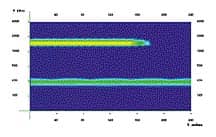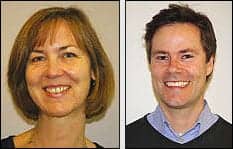|
PROCEEDINGS Audiological Support Programs for the Elderly The Hearing Review has agreed to publish a selection of excellent presentations drawn from the Hearing Rehabilitation Foundation’s “First International Adult Rehabilitation Conference,” which was held in Portland, Me, in May 2001. This article by Sherri L. Smith, Patricia B. Kricos and Alice E. Holmes from the University of Florida focuses on an important, but often neglected, area in aural rehabilitation—the visual capabilities of elders. This is a very personal topic for me, as both my parents have acquired severe visual problems in their later life. Coupled with acquired hearing loss, these vision changes have created many difficulties for them. The following article provides an excellent introduction to the topic and makes a number of suggestions for improving services to elders with hearing loss and visual problems. I’m sure that hearing health care professionals working with the elderly will find it an extremely interesting presentation. — Geoff Plant Geoff Plant is an Australian teacher of the deaf. He worked for the National Acoustic Laboratories (NAL) in Sydney from 1974-1992, and during that time developed a number of testing and training materials for children and adults. Geoff has been a visiting scientist at MIT and has published over 40 papers in peer-reviewed journals. Now based in Boston, he is the president of the Hearing Rehabilitation Foundation (HRF), a not-for-profit organization set up to promote speech communication training for profoundly deaf children and adults. Geoff currently divides his time between working for the HRF, acting as a rehabilitation consultant for Med-El Corp., and teaching speech to deaf students at the Rhode Island School for the Deaf. |
Nearly every person experiences changes in vision as a result of the aging process.1 Yet those conducting audiological rehabilitation (AR) programs for the elderly often do not take the visual capabilities of the participants into account—despite the fact that AR programs often make extensive use of visual materials. Patients are expected to learn to manipulate and care for tiny amplification devices that they may have trouble seeing. Written materials, both instructional and informational, are likely sent home with patients who may have difficulty reading the small print on the glossy, white paper.
There are several quick, efficient and practical methods for providing AR to elders who have visual difficulties. This article identifies the major types of age-related vision problems and offers suggestions on how hearing care professionals can help patients compensate for these problems during the AR process.
Vision Problems Common to the Elderly Population
The most common age-related visual disorders include presbyopia, age-related macular degeneration (ARMD), glaucoma, diabetic retinopathy and cataract. While each of these disorders is discussed briefly below, an in-depth discussion of causes, physiology, risk factors, treatments and rehabilitation of these conditions is beyond the scope of this article (the reader is referred to cited references to obtain more detailed information).
Presbyopia: Almost all individuals will encounter presbyopia or “farsightedness.” It generally begins in the mid-40s and is considered a normal part of the aging process. As aging occurs, the lens in the eye becomes less elastic, causing it to lose its ability to focus on objects that are near.1,2 Other naturally occurring, age-related visual problems include decreased dark/light adaptation, increased problems with glare and reduced contrast sensitivity.2
Age-Related Macular Degeneration (ARMD): Age-related macular degeneration is the most common cause of blindness in people age 65 and older.3 There are two classifications of ARMD: 1) an exudative form (often referred to as the wet ARMD), and 2) a non-exudative (or dry) form.2 Wet ARMD is less common, but more severe.4 Visual symptoms of both types of ARMD include reduced visual acuity, loss of central vision and loss of contrast sensitivity (Figs. 1a-b). Peripheral vision remains unaffected by the disease process. Individuals with ARMD may have difficulties with or lose the ability to read, drive, recognize faces and perform activities of daily living (ADL).1
|
Fig. 1a-b. Top: View of two boys by an individual with normal vision. Bottom: View of two boys as it might be seen by one with age-related macular degeneration. Source: The National Eye Institute, National Institutes of Health.9 Reference numbers EDSO1 and EDS05. |
Fig. 2. View of two boys as they may be seen by an individual with glaucoma. Source: The National Eye Institute, National Institutes of Health.9 Reference number EDS02.
Fig. 3. View of two boys as they may be seen by an individual with diabetic retinopathy. Source: The National Eye Institute, National Institutes of Health.9 Reference number EDS04. |

|
|
Glaucoma: Glaucoma affects roughly 2 million Americans,3 and it is the leading cause of blindness in the elderly after ARMD.2 Glaucoma results from an increase in intraocular pressure, leading to damage and eventual death of the optic nerve. This pressure increase occurs when the there is an abnormal flow of the fluid in the filtration system in the eye.1 Vision loss from glaucoma includes loss of peripheral vision and, in severe cases, total blindness (Fig. 2).2 Objects may suddenly appear in the individual’s field of view, surprising him or her.1 Individuals with glaucoma may have trouble with reading, writing and ambulation.
Diabetic Retinopathy: The most common diabetic eye disease and leading cause of blindness in diabetic adults in America is diabetic retinopathy. This visual ailment is found in individuals who suffer from diabetes for many years. It is caused when blood vessels in the eye swell, hemorrhage or undergo abnormal new growth.2 Visual symptoms of this disease include scattered vision loss, increased sensitivity to glare, and reduced color and contrast perception (Fig. 3). Individuals with diabetic retinopathy may have difficulty with or reduced ability to read, recognize faces and judge depth perception and/or changes in lighting.1
Cataracts: Cataract affects approximately 18% of individuals ages 65-74 and increases to approximately 46% for those ages 75-85.3 It is caused by the denaturation of proteins which clouds the lens and prevents light from penetrating the retina.2,3,5 The most common visual effects of a cataract include blurred vision, cloudy vision, sensitivity to scattered light and glare, reduced or faded color perception, and visual distortion (Fig. 4). Cataracts can cause difficulty with reading, driving and other ADLs.1
AR Strategies for Compensating for Vision Problems
Despite the limitations that these conditions place on the visual capabilities of elderly patients, reduced vision need not be a barrier to receiving effective AR. Several strategies are available to assist those conducting AR for patients with visual impairment:
Magnification: Magnification is to vision what amplification is to hearing. Magnification can be a great tool during hearing aid orientations and demonstrations. By making the hearing aid larger through magnification, hearing aid components (i.e., microphone, volume wheel, telephone switch, battery door, etc.) become more visible and offer less visual strain when the elderly patient is learning where to locate them. Demonstrating the use and care of hearing aids under magnification may also be beneficial to elderly patients who may see battery insertion and cleaning procedures with more ease.
Several University of Florida audiologists participated in the beta testing of a visual magnification device, the Clearview 100® (manufactured by Optelec United States, Inc.) to determine its effectiveness in AR support programs for the elderly. This device, when coupled with any size television, allows for magnification of objects. The objects to be magnified are placed under a camera located on an adjustable arm for magnification. A guide (a red light) can be used for proper placement under the arm, and focusing on the object is achieved via a button. A zoom feature allows for larger or smaller display of the object. Positive and negative display of the object is also an option.
An open-ended survey was administered to AR support program participants to ascertain their views towards the helpfulness of this device during the session. Participants, patients and their significant others were given the option to respond to the questions in a written or oral-interview format. Anonymous responses were also accepted if the patient so desired. Program participants were strongly encouraged to respond with honest opinions. Their feedback was voluntary and in no way compromised their care.
| Do you have vision problems? If so, please describe.
How did the audiologist use the magnifying device for you? On a scale of 1 (impossible) to 7 (very easy), how easy was it for you to see the hearing aid and hearing aid controls WITHOUT the magnifier? On a scale of 1 (impossible) to 7 (very easy), how easy was it for you to see the hearing aid and hearing aid controls WITH the magnifier? On a scale of 1 (great difficulty) to 7 (no difficulty), how comfortable was the audiologist in using the magnifier? Did you experience any problems with the use of the magnifier? If so, please describe. Do you think that the use of the magnifier made it easier to learn how to care for your hearing aids? |
| Table 1. Patient questionnaire on the usefulness of magnification. |
The patient feedback survey asked seven questions (Table 1). Approximately 100 AR support program participants offered feedback on the magnification device. Most program participants indicated that they had no visual problems while using their glasses. Of these, most could see the hearing aid controls at a reported 4 or 5 on the 1-to-7 (impossible to very easy) scale without magnification, and all reported a 7 with the use of the magnifier. Most participants indicated that magnification made it easier to learn how to use and care for their hearing aids.
Only a few patients were legally blind. Those patients reported that it was impossible to see the hearing aid controls without magnification (a report of 1) and that, with magnification, it was easier by at least 2 points, if not more.
Surveys were also given to staff audiologists who utilized the visual magnification device during AR support program sessions (Table 2). The survey contained open-ended questions designed to ascertain the audiologist’s view of the effectiveness of the device as a visual aid during the session. Responses were in written format, were optional, and were anonymous if the audiologist so desired.
| How have you used the magnifying device (e.g., hearing aid orientation, hearing aid display, in-services, etc.)?
How helpful did you find the device? On a scale of 1 (very difficult) to 7 (very easy), how easy was it to transport and set up? On a scale of 1 (very difficult) to 7 (very easy), how easy was it to situate the object being magnified for ideal viewing? Did your patients (or in-service participants, etc.) provide feedback to you regarding the use of the device? If so, please describe. Please list any problems or suggestions for improved use of the device. Would you recommend this device to other audiologists? |
| Table 2. Audiologist questionnaire on the usefulness of magnification. |
Seven audiologists offered feedback regarding the device as a visual aid in AR support programs. Most audiologists used the device in hearing aid orientations, but others also reported using it at health fairs and during in-service staff training. All audiologists reported that the device was a valuable aid during the AR session. All reported that program participants provided positive feedback regarding the use of magnification in their learning. As a result of the beta testing project, the Clearview 100® was renamed the Audioview®.
The use of magnification as a visual aid for elderly patients in AR programs is effective. Magnification can be accomplished using devices such as the device described above or other hand-held and/or bench-top magnifiers.
Written Materials: Hearing care professionals commonly use written materials throughout the AR process as supplemental, informational and instructional resources. With that in mind, how much thought is truly given to the font size, font style, colors, content and organization of the text when the reader is elderly? Too frequently, the answer is “very little.” Bernier6 suggests the importance of making careful design decisions when generating what she calls patient education materials (PEMs), which include brochures, leaflets, pamphlets and information guides.
The organization of PEMs must be clear and simple so as to easily express their intended purpose to the patient. Considering the patient’s needs and wants when developing PEMs will maximize their use and benefit. For example, the patient may be less interested in the anatomy of the ear and more interested in communication strategies for noisy restaurants. Broad topics can be broken into smaller units, making it easier for the reader to understand the topic. Summarized points, mnemonics and reviews of main ideas may offer easier recall and better retention for the patient. Also, topics are best covered in 3-4 main points, as one reader may have different interests than others.
Content of PEMs is an important consideration for written material. Of course, content must be accurate and relevant to the topic. Common vocabulary should be used. For example, “emotional and social” may be alternate words for “psychosocial.” Healthcare jargon, if used, should be defined for the patient.6
Elderly patients reportedly prefer larger font. Font sizes, such as 14- or 16-point font, may be more easily read. Bernier6 suggests at least 3 points between line spaces for size 14 font. She further suggests using a clear font type such as English Times with both upper and lower case letters.
Legge et al.7 correlated low contrast text with longer reading times. In addition, Watson1 reported that increasing contrast of objects and their backgrounds makes for easier viewing. She further noted that older people more easily view bright colors, as opposed to dark and pastel colors. Therefore, text that combines both color and contrast cues may be easier and quicker for the older patient to read. For example, dark text on a yellow background may be easier to see than blue text on a black background. Additionally, matte paper as opposed to glossy paper may reduce problems with glare.
Office Lighting: Most elders require more lighting to perform activities than younger individuals. However, too much lighting can be counterproductive; it is important to present adequate lighting without creating additional glare when working with older individuals.8 Close, incandescent lighting is suggested for patients who are engaged in activities such as reading, writing and hobbies. In an AR session, a flex-armed lamp with an incandescent bulb may offer adequate lighting, without glare, for the patient who is learning to insert a battery into a hearing aid, for example.1
| Magnification Magnification devices (e.g., Audioview® or hand-held magnifiers) Written Materials—Organization Written Materials—Content Written Materials—Style Lighting Environment |
| Table 2. Audiologist questionnaire on the usefulness of magnification. |
Environment: The room in which AR support programs take place may play a role in how well an elder sees. As previously mentioned, glare can be a common problem. Overhead fluorescent lighting in the room can create glare,2 while softer overhead lighting may reduce these problems. The furniture in the room, especially if it has a highly reflective surface, may create additional glare. Adding a tablecloth or a display to such furniture may take care of this problem.
Sunlight penetrating the room through a window may reduce the contrast available, making it difficult to read, work with hearing aids and see faces. Simple application of window treatments such as blinds or drapery may reduce visual problems associated with direct sunlight.
Hazardous obstacles in the environment may cause elderly patients to stumble or even injure themselves. Since elders perceive bright colors more easily, drawing their attention to such hazards may reduce the potential for accidents. For example, red or yellow tape on an unexpected step or a low ceiling may alert the elderly person to the potential hazard.
We have found our work with elderly individuals who have both vision and hearing impairments to be challenging and gratifying. Table 3 contains a summary of the aforementioned suggestions. Most of these suggestions are easy to accomplish and very effective for enhancing AR programs that include elders.
Correspondence can be addressed to HR or Sherri Smith, AuD, Univ. of Florida, Dept. of Communication Sciences and Disorders, Box 117420, Gainesville, FL 32611; email: [email protected]. If you would like to obtain a copy of the conference proceedings, or find out more about the next conference (to be held in May 2003), contact: Geoff Plant, The Hearing Rehabilitation Foundation, 35 Medford Street, Somerville, MA 02143; email: [email protected]; Web site: www.hearf.org.
References
1. Watson GR: Low vision in the geriatric population: Rehabilitation and management. J Amer Geriatrics Soc 2001; 49: 317-330.
2. Castor TD & Carter TL: Low vision: Physician screening helps to improve patient function. Geriatrics 1995; 50 (12): 51-57.
3. Abyad A: In-office screening for age-related hearing and vision. Geriatrics 1997; 52 (6): 45-57.
4. Age-Related Macular Degeneration Alliance International. Press Room of organization’s Web site: http://amdalliance.org/press/us/ten.html. 2001.
5. Ditkoff RR: Modern cataract surgery. Aging and Vision 2000; 12 (1): 7.
6. Bernier MJ: Developing and evaluating printed education materials: A prescriptive model for quality. Orthopaedic Nursing 1993; 12 (6): 39-46.
7. Legge GE, Ahn SJ, Klitz TS & Luebker A: Psychophysics of Reading-XVI. The visual span in normal and low vision. Vision Research 1997; 37 (14): 1999-2010.
8. Kricos PB & Lesner SA: Audiologic Rehabilitation for the Elderly: A Practical Approach. Boston: Butterworth-Heinemann, 1995.
9. National Eye Institute: National Institutes of Health. Reference numbers EDS01-EDS05. Web site: http://www.nei.nih.gov/photo/sims/sims.htm. 2001.









